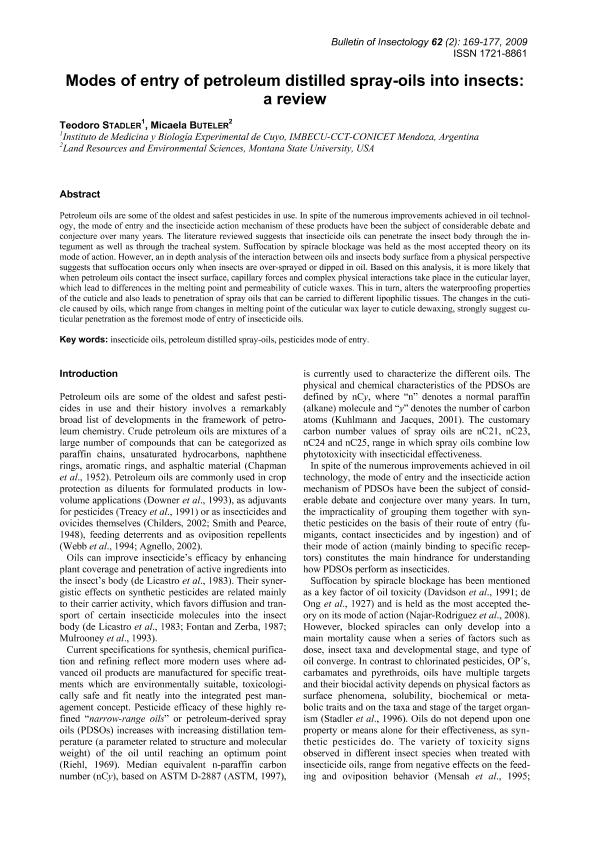Artículo
Modes of entry of petroleum distilled spray-oils into insects: a review
Fecha de publicación:
12/2009
Editorial:
Department of Agroenvironmental Sciences and Technologies
Revista:
Bulletin of Insectology
ISSN:
1721-8861
Idioma:
Inglés
Tipo de recurso:
Artículo publicado
Clasificación temática:
Resumen
Petroleum oils are some of the oldest and safest pesticides in use. In spite of the numerous improvements achieved in oil technology, the mode of entry and the insecticide action mechanism of these products have been the subject of considerable debate and conjecture over many years. The literature reviewed suggests that insecticide oils can penetrate the insect body through the integument as well as through the tracheal system. Suffocation by spiracle blockage was held as the most accepted theory on its mode of action. However, an in depth analysis of the interaction between oils and insects body surface from a physical perspective suggests that suffocation occurs only when insects are over-sprayed or dipped in oil. Based on this analysis, it is more likely that when petroleum oils contact the insect surface, capillary forces and complex physical interactions take place in the cuticular layer, which lead to differences in the melting point and permeability of cuticle waxes. This in turn, alters the waterproofing properties of the cuticle and also leads to penetration of spray oils that can be carried to different lipophilic tissues. The changes in the cuticle caused by oils, which range from changes in melting point of the cuticular wax layer to cuticle dewaxing, strongly suggest cuticular penetration as the foremost mode of entry of insecticide oils.
Archivos asociados
Licencia
Identificadores
Colecciones
Articulos(IMBECU)
Articulos de INST. DE MEDICINA Y BIO. EXP. DE CUYO
Articulos de INST. DE MEDICINA Y BIO. EXP. DE CUYO
Citación
Stadler, Teodoro; Buteler, Micaela; Modes of entry of petroleum distilled spray-oils into insects: a review; Department of Agroenvironmental Sciences and Technologies; Bulletin of Insectology; 62; 2; 12-2009; 169-177
Compartir




